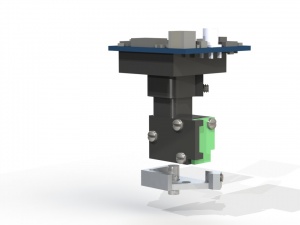Difference between revisions of "Main Page"
(→Guides and Tutorials) |
|||
| Line 31: | Line 31: | ||
# [[Part Procurement]] | # [[Part Procurement]] | ||
# [[System Assembly]] | # [[System Assembly]] | ||
| + | # [[Recommended Computer Specs]] | ||
# [[Software and Firmware Setup]] | # [[Software and Firmware Setup]] | ||
# [[Surgery and Implantation Guide]] | # [[Surgery and Implantation Guide]] | ||
Revision as of 16:19, 7 January 2016
UCLA MINIscope Resource
Welcome to the MINIscope Wiki site. We are currently in the process of updating all the content of the site to the newest version of our system. If you are interested in gaining access please leave your information here and we will update you when the site becomes open (by January, 2016).
Contents
Overview
Our miniature fluorescence microscope uses wide-field fluorescence imaging to record neural activity in awake, freely moving mice. Our microscope has a mass of under 3 grams and uses only a single, flexible coaxial cable (0.3mm to 1.5mm diameter) to carry power, control signals, and imaging data. The goal of this wiki site is to provide a centralized location for design files, source code, and other relevant information to help disseminate this technology to the larger neuroscience community. While our system is not an off-the-shelf commercial solution, we have focused on making it as easy as possible for a standard neuroscience lab to build and modify, requiring minimal soldering and hands on assembly. For more information please visit our Project Overview page.
Links to information on miniscope subsystems
Discussion Board and FAQ
Guides and Tutorials
We designed our miniscope system to be easy to build and use. The 3 guides below will walk you through component procurement, scope assembly, and software installation.
- Overview of System Components
- Part Procurement
- System Assembly
- Recommended Computer Specs
- Software and Firmware Setup
- Surgery and Implantation Guide
- Animal Behavior Guide
Once you have built your system. This tutorial will explain how to use the different features of the scope.
